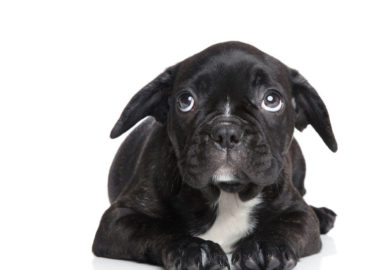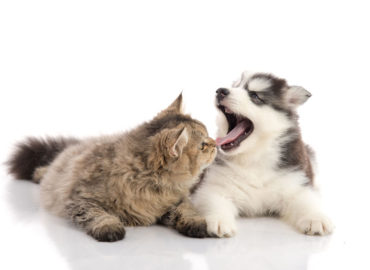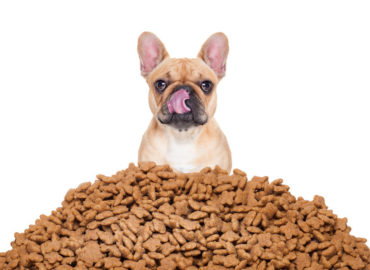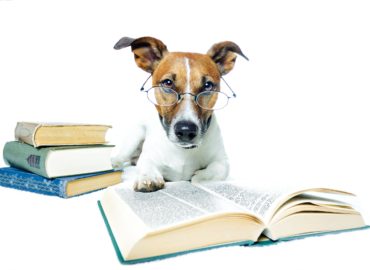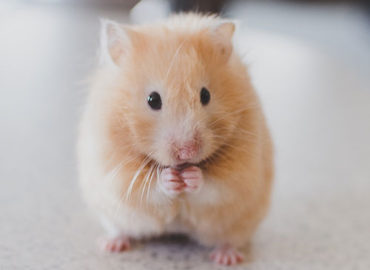Preparing To Leave Your Dog At Home [again]
Preparing Your Pets to be Left Alone [again]
It is ironic that in a period of enforced social isolation our pets have experienced anything but. During the recent lockdown many of our pets will have become accustomed to extended periods of companionship. Young pups, in particular, will be currently going through their peak socialisation/learning period, between 8 weeks and 24 weeks of age, and won’t have had any prolonged periods of relative isolation and may have had limited socialisation and exposure with the outside world. Even older pets may have relearnt to expect multiple daily walks and frequent play times in the backyard. So what to do with our pets now that Mum, Dad and the kids are becoming progressively absent for most of the day as their human lives slowly tick back to normal?
Prepare Prepare Prepare!
As they say, preparation costs nothing. Start by pretending to leave your pets alone for very short periods and gradually extend the time they are left alone. Distract by scattering some dry food on the floor or in a favourite chew toy then get the whole family to leave for a few moments. Run through the normal exit routine eg bags, shoes, wallets, phone, keys then walk to the letterbox or somewhere nearby for a few minutes then head back. Upon re-entry to the home your dog may be very excited, its ok to say hello to them but try and ignore them until they relax, preferably by sitting on their target mat or bed before giving them your full attention and praise. Then repeat a few times gradually extending the period the dog or pup is left alone.
Plan where you are likely to leave them. Chose a safe spot that the dog or pup is comfortable in and is unlikely to do much damage to, some like the yard, others may prefer to crate train or confine to a small internal easily cleaned room that the dog likes. A room with a view isn’t always a great choice as the dog may call out [read bark and howl] at people or dogs walking by.
Engage the brain. You’ll be unlikely to be able to do the 4 to 5 sessions of walks and plays you are currently doing but you can cram more mental stimulation into the one session per day by taking them somewhere new with different smells, sights and sounds. Run through some basic training or games such as long leash or off leash recalls, hide and seek or find the treat.
Never punish. Punishment aims to inhibit behaviour via the fear based emotional system and is best avoided [unless they pose a risk to themselves or someone else]. Far better is positive reward based learning which encourages behaviours we want to be repeated such as toileting in the right area, recall when asked and sit on command by using bridging words such as good boy/girl or yesss followed immediately by small tasty treat. Then allow unwanted behaviours to become “extinct” by ignoring them. Most parents of young children already have learnt the basics of this learning system.
Behavioural Responses
When dogs are motivated by negative emotional states such as fear/anxiety, panic and frustration they can try and resolve this state by one of four behavioural responses: avoidance, appeasement, inhibition and repulsion.
Repulsive responses such as aggression signalling eg growling or barking may result in physical fighting and, in the wild, is generally the choice of last resort. Avoidance or escape behaviour is usually preferred. If this is not possible eg because the individual is on a lead or with their primary care provider and the source of fear continues its approach then dogs will frequently display an appeasement response such as rolling onto their back, showing their inguinal region or windmill wagging of their tail. If the source of anxiety continues its approach, then dogs will attempt to passively gather more information about the stimulus, termed inhibition, with the aim of evading or avoiding any negative consequences before deciding on the most appropriate next action. Inhibitory behaviour is characterised by freezing almost “statue still”. A normal dog who still feels threatened by the approaching stimulus eg unknown human at the beach, may then display repulsion signalling. Usually progressing through altered body/ear/tail posture, dilated pupils, facial wrinkling, hackles, growling and teeth exposure then to lunging and biting which should all generally warn other dogs or people/children not to approach.
One of the most important skills pet owners should learn is to read their pets’ body language. Most people know that a wagging tail on a dog is usually good but in a cat not so much. However, there is much more to read including facial tension, pupil dilation, ear position, head, neck and body posture etc. Learning to detect expressions of over arousal called displacement behaviours can help owners to assess their pet’s current emotional state and can also help predict behaviour.
Displacement behaviours are normal behaviours done in an abnormal context or situation. These include things like licking their lips a lot [when they haven’t eaten or drunk], shaking their whole body like they are wet [when they are dry] or scratching at their neck or ears [when they are not itchy]. These are an outward expression of an internal negative emotional state and are often associated with appeasement behaviours including pawing, whining at or jumping up on their owners with their forepaws. Dogs are saying, “I am a little bit uncertain about this situation, what should I do?. Can you please advise me.” If not suitably identified and dealt with by the owner these displacement behaviours can precede behavioural responses of avoidance [running away] or repulsion [aggression].
Over arousal can interfere with pets’ ability to make good decisions and one of the roles of veterinary behaviourists and behavioural trainers is to teach anxious over aroused pets to relearn how to be calm. Mild cases of over arousal or anxiety can respond to simple over the counter products such as adaptil collars or spray [10 sprays placed on bandana, waved in the air then placed around pup’s neck] or zylkene [a milk product given orally or placed in food]. Adaptil helps dogs and pups cope with change and studies show they learn better at puppy preschool with this product applied.
Socialisation
Socialisation or as like to call it “associalisation” is the name for the technique of introducing your pup to the outside world. It is generally started as soon as possible but ensuring they are fully vaccinated or not exposed to potential pathogens [mainly Parvo virus]. The simple approach is to teach your new pup to “associalate” most new places, people, objects and noises with a positive outcome which is generally a small tasty snack such as dried liver.
Example Associalisation Technique
When you are walking your pup on leash along the footpath in the presence of a new trigger stimulus such as a kid on a bike or dog on a leash, garbage truck on the road etc
They will probably be excited and possibly jumping up on you and looking uncertain. That’s ok, don’t reassure or reward them…yet. Remember your job is to teach them that everything is ok, so do your best to be a good calm role model. Ask for their attention by calling their name and requesting a calm sit and if they sit or stand still and look at you even for a second reward with “bridging” word eg yesss or good boy/girl [the chosen word is a “bridge” between the correct behaviour and the reward] followed immediately by the reward. Repeat the process a few times trying to hold their attention/gaze for a few more seconds followed every time by bridging word and treat.
If the trigger stimulus is a fellow human walker who wants to stand 1.5m away and talk to you or pat your pup then that’s great, but they are only allowed if they give your pup a small section of dried liver supplied by you (then please both wash your hands and don’t touch your face ;). This technique is called classical conditioning and in learning theory it forms long standing positive emotional connections in individuals’ brains.
The Last Word
Remember to be calm, consistent and patient. There will be failures, chewed up things, melt downs and poo, lots of poo, but that’s all part of the deal you agreed to when you brought that cute, sentient but naughty living creature into your family home. Trust me, it will be all worth it in the end, but if things don’t feel “right” and, for whatever reason, your pup or your family don’t seem to be coping together then we are here to help. Milton Village Vet offers a full behavioural service integrating veterinary behavioural diagnostics and Delta Society accredited behavioural training including puppy preschool, junior training and private consultations [ring the hospital 4454 4949 or contact Becky Emans at bestbehaviour.net].
Dr Matt BVSc MACVSc [small animal surgery]
Milton Village Vet
4454 4949
![Preparing To Leave Your Dog At Home [again]](https://miltonvillagevet.com.au/wp-content/uploads/2016/08/45155372_m.jpg)
